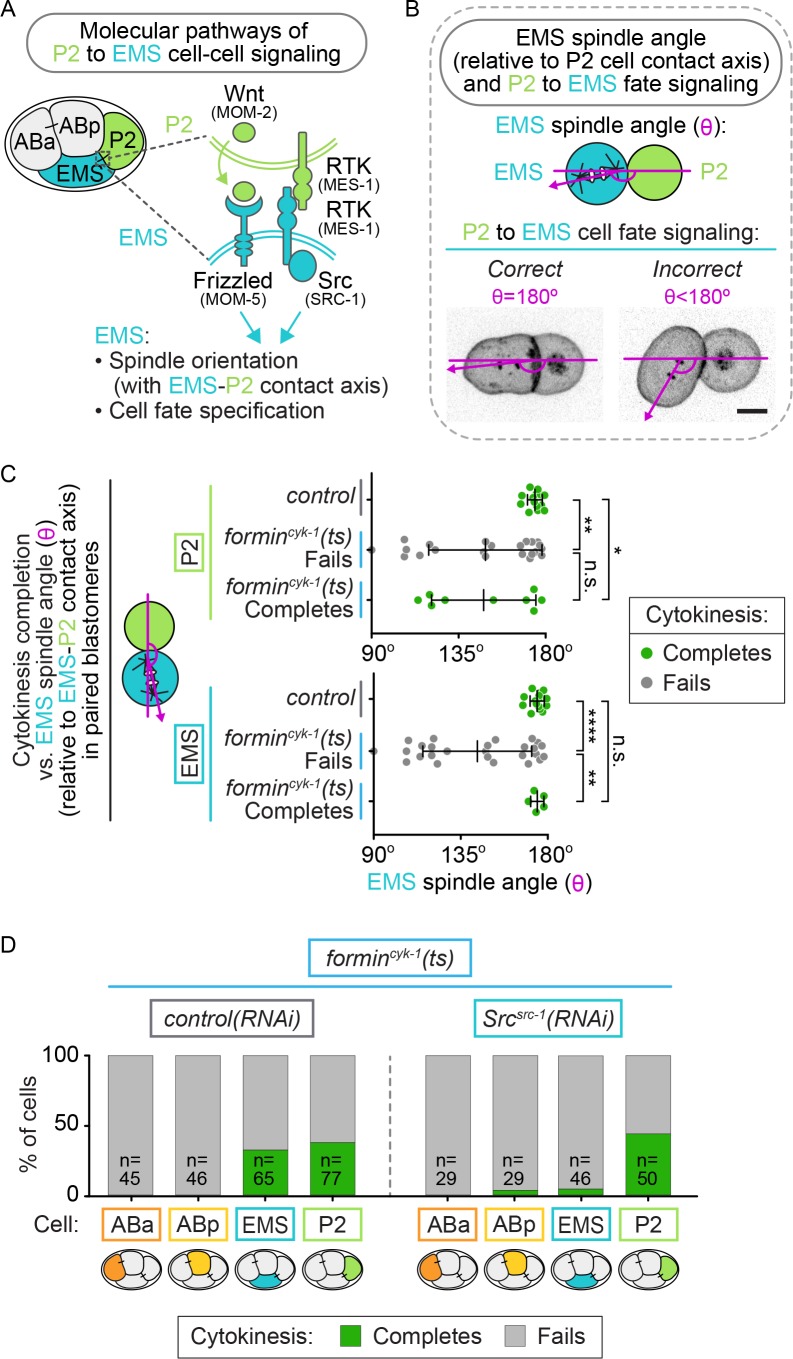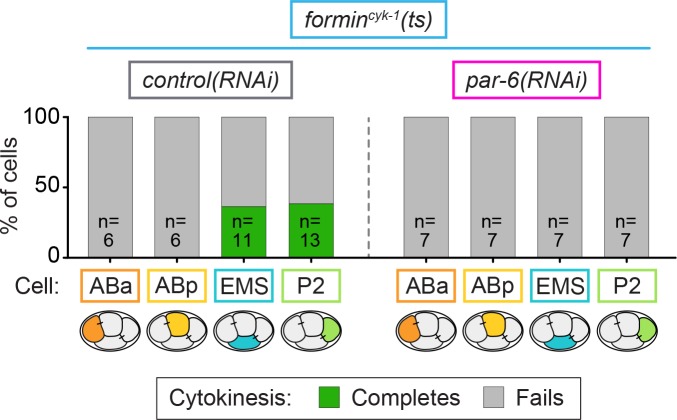Figure 8. SrcSRC-1 mediated signaling from P2 provides the cell-extrinsic regulation of cytokinesis in EMS.
(A) Schematic showing EMS and P2 cell-cell signaling during EMS cell fate specification. (B) Schematic showing how the EMS spindle angle was calculated. (C) Graph showing the EMS spindle angle (as a read-out for proper EMS cell fate specification) for different EMS (left) and P2 (right) cells within paired-blastomere doublets from control or formincyk-1(ts) embryos that successfully complete or fail in cytokinesis. Note: the doublets analyzed here are the same as those used in Figure 7. (D) Graph showing the frequency of successful cytokinesis for each cell type in intact formincyk-1(ts); control(RNAi) and formincyk-1(ts); Srcsrc-1(RNAi) embryos. Error bars, mean ± SD. Two tailed Mann-Whitney test (Supplementary file 1); n.s., no significance, p>0.05; *p≤0.05; **p≤0.01; ****p≤0.0001. (F) Model showing the role extrinsic and intrinsic factors in EMS and P2 cytokinesis. Temperature, 26°C; scale bar = 10 µm.



